Cricket is a popular sport known for its variety of bat shots. There are two main types: conventional and unconventional.
Coaches mostly focus on teaching conventional shots. These are safe and elegant, like the cover drive and straight drive.
Unconventional shots, such as the reverse sweep and switch hit, are riskier. Yet, modern players use them for higher rewards.
The game of cricket has evolved. With changing formats and rules, batters have become more creative. They now try shots once thought impossible.
This article will also highlight front foot and back foot shots. Front foot shots involve moving towards the ball and shifting weight to the front foot. In contrast, back foot shots keep weight on the back foot, allowing for late shots.
We’ll also cover special shots. These do not fit into traditional categories. But, they are gaining popularity for their effectiveness and excitement.
List Of Top 10 Cricket Batting Shots Name
-
Orthodox or Conventional Batting Shots
1) Straight Drive
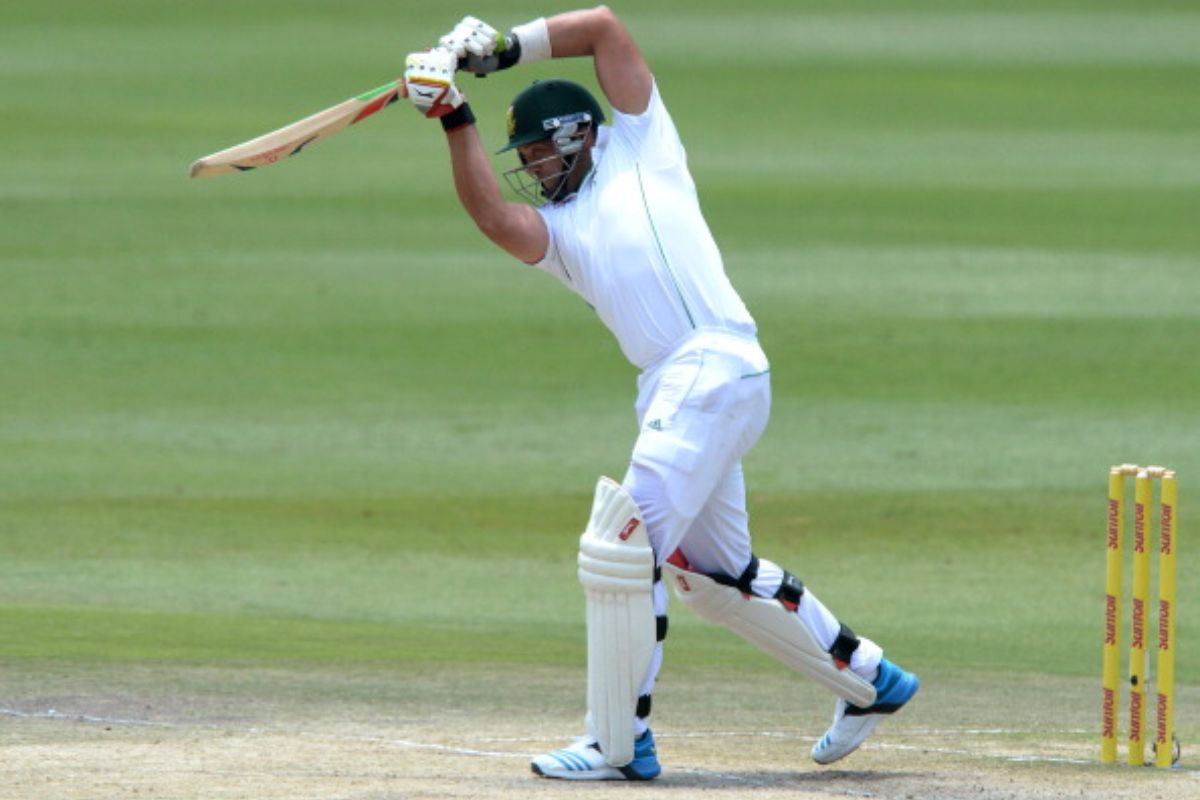
One of the most elegant and classical shots in cricket is the straight drive.
The straight drive is a beautiful shot. It’s perfectly executed against a full-length delivery. The ball is pitched between middle and leg stump. The key lies in the batsman’s alignment. Their head, foot, elbow, and bat face aim towards the sight screen.
Many cricketers play the straight drive well. Yet, none can top Sachin Tendulkar. He’s the best. This shot is his trademark.
For a straight drive to work, the ball must go beside the umpire. This placement allows the ball to pass through field gaps. It’s hard for fielders to catch, and it boosts the chance of a boundary.
2) On-Drive
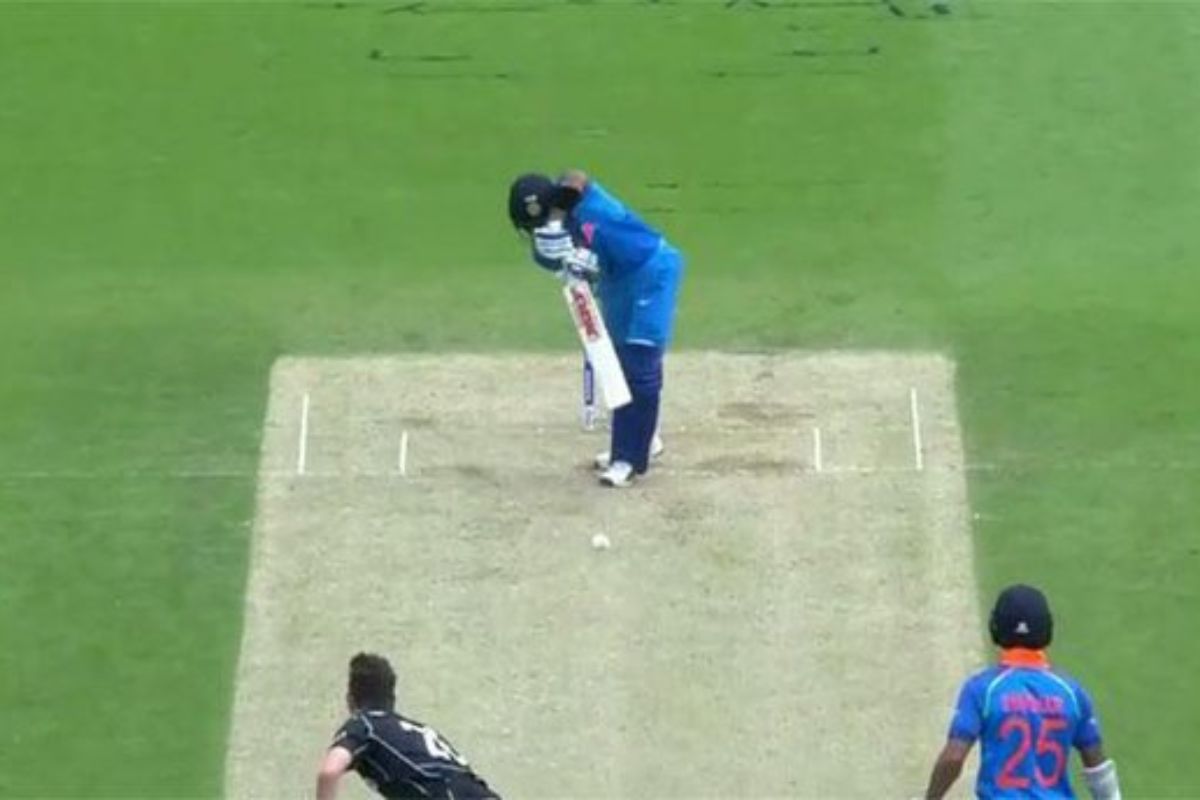
Many young cricketers and fans think the straight drive and on drive are the same. However, this is wrong. The key difference is their target. An on drive goes between mid-on and mid-wicket, while a straight drive aims for the sight screen.
The straight drive is tough. It’s not done often due to the risk of LBW. It needs perfect timing to hit a full-length delivery straight back.
Meanwhile, an on drive targets a leg stump pitch. The batsman guides the ball to mid-on by extending their bat and elbow. It’s also a tough shot, but players like Steve Smith and Virat Kohli pull it off well.
Knowing these shots well can help a player improve and enjoy the game more.
3) Off-Drive

A batsman hits an off drive by playing a full-length delivery towards mid-off. He lines up his head, elbow, and feet with the ball. This shot is named an off drive.
The off drive is usually aimed at off stump balls. It can also target middle stump balls, but only if the bowler’s pace is slower. Facing a faster delivery, it’s better to aim for an off stump ball. This choice improves control and placement.
Sachin Tendulkar, known for his excellent technique, was a master of the off drive. His ability to consistently hit this shot accurately and elegantly made him one of cricket’s best batsmen.
4) Cover-Drive Shot

Virat Kohli’s cover drive skills have boosted its appeal. He’s made it an art with his precise technique and elegance. Yet, it’s crucial to note the drive is challenging. It needs accurate judgment to hit long deliveries aimed at the off-stump.
The margin for error is slim. Missing the ball’s line or length increases the risk of being caught. Kohli’s careful method includes proper footwork, bat extension, and head position. This combination has made him a cover drive expert and an inspiration to young cricketers everywhere.
5) Square Drive
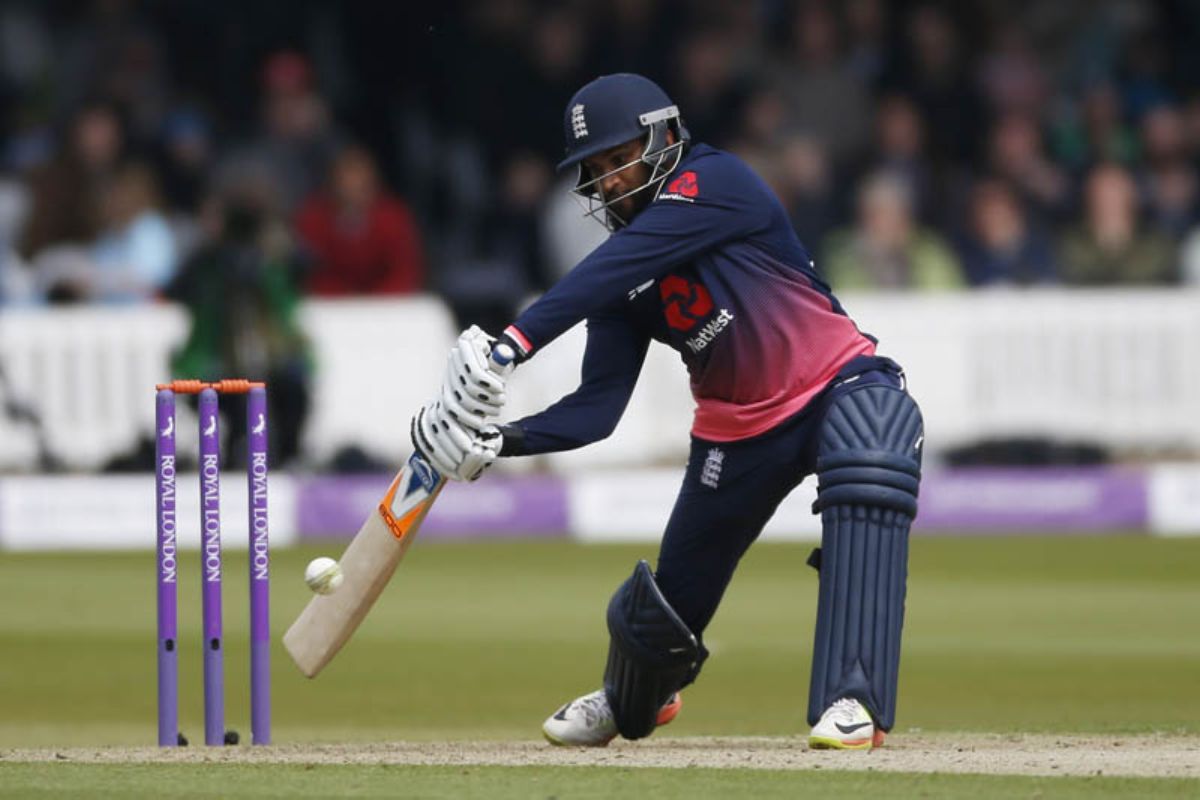
When talking about front foot drives in cricket, it’s vital to include the square drive. This shot adds to a batsman’s skills with its precise execution.
The ideal ball position for a square drive is just outside the off stump. Then, the batsman needs perfect timing and technique to hit it well.
What makes the square drive unique is its direction. It goes between point and covers. This showcases a sharp square drive.
Top cricketers like Joe Root, Steve Smith, Virat Kohli, and Kane Williamson are experts in the square drive. Their precise and powerful shots make them tough opponents.
Understanding the square drive adds to one’s appreciation of batting in cricket. It highlights the art and skill needed to succeed.
6) Front Foot Defense
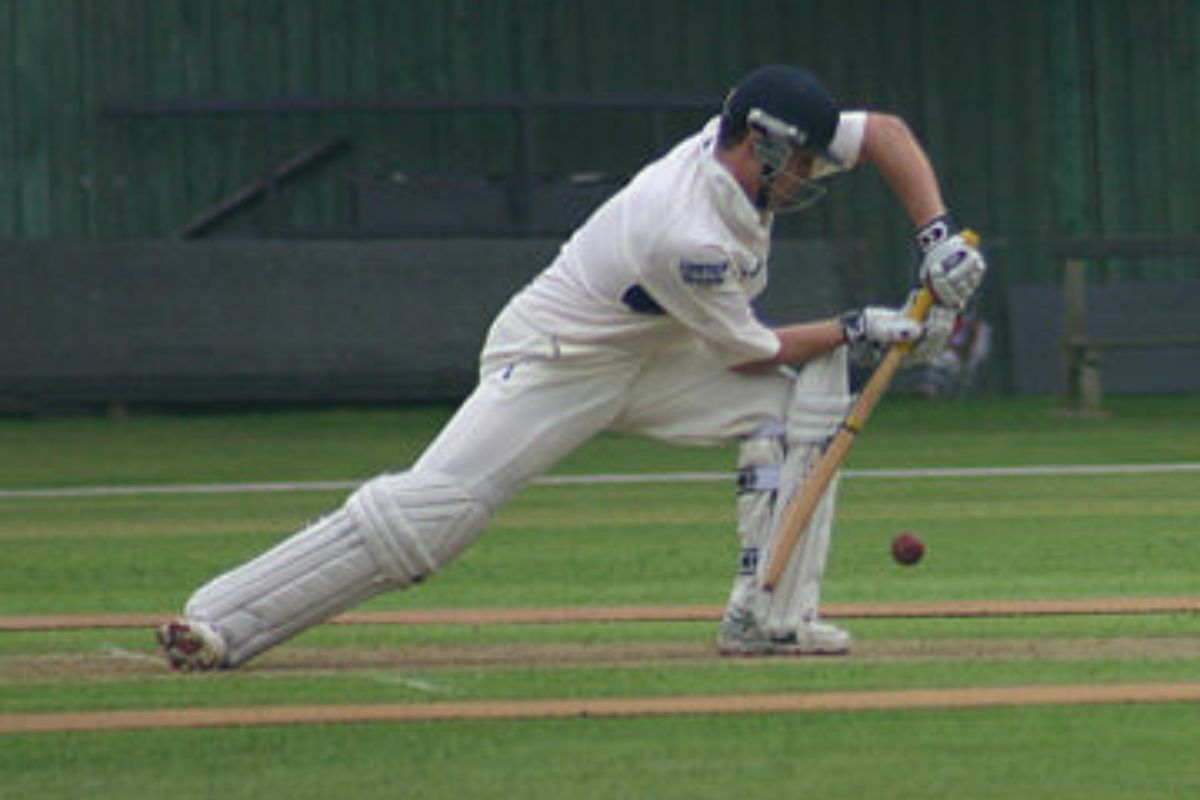
A batsman needs solid basics to play all cricket shots well. Key to this is mastering the front foot defensive shot. It’s a crucial skill against fast bowlers who swing the ball over 140 kilometers per hour.
When facing a fast, swinging ball at the right length, the best move is to step forward and block with a solid shot. This prevents being out leg before wicket (LBW) or bowled. Rahul Dravid, a famous Indian batsman, was a master of this technique. His precise footwork and technique allowed him to handle any fast, tricky delivery.
Learning the front foot defense is vital. It’s not just about staying at the wicket. It’s also the first step to becoming a good batsman. It builds confidence, discipline, and resilience, crucial for success in international cricket.
7) Back Foot Defense

In cricket, players use both the forward and back foot defenses. The back foot defense is key. Batsmen step back, shift their weight, and block high deliveries with their bat. This technique is crucial on bouncy pitches, aiding in handling fast bowlers.
Some might underestimate defense in cricket, including these key techniques. However, they are essential for success. These shots lay the groundwork for a good innings. They help in finding rhythm, timing, and confidence. By starting with these defenses, batsmen can withstand early pressure, settle in, and build a strong foundation.
In short, these defenses are vital. They not only protect against tough bowlers but also set the pace for an innings. Ignoring them is a big mistake. They are the foundation of a batsman’s skill and greatly boost their success on the field.
8) Back Foot Drive
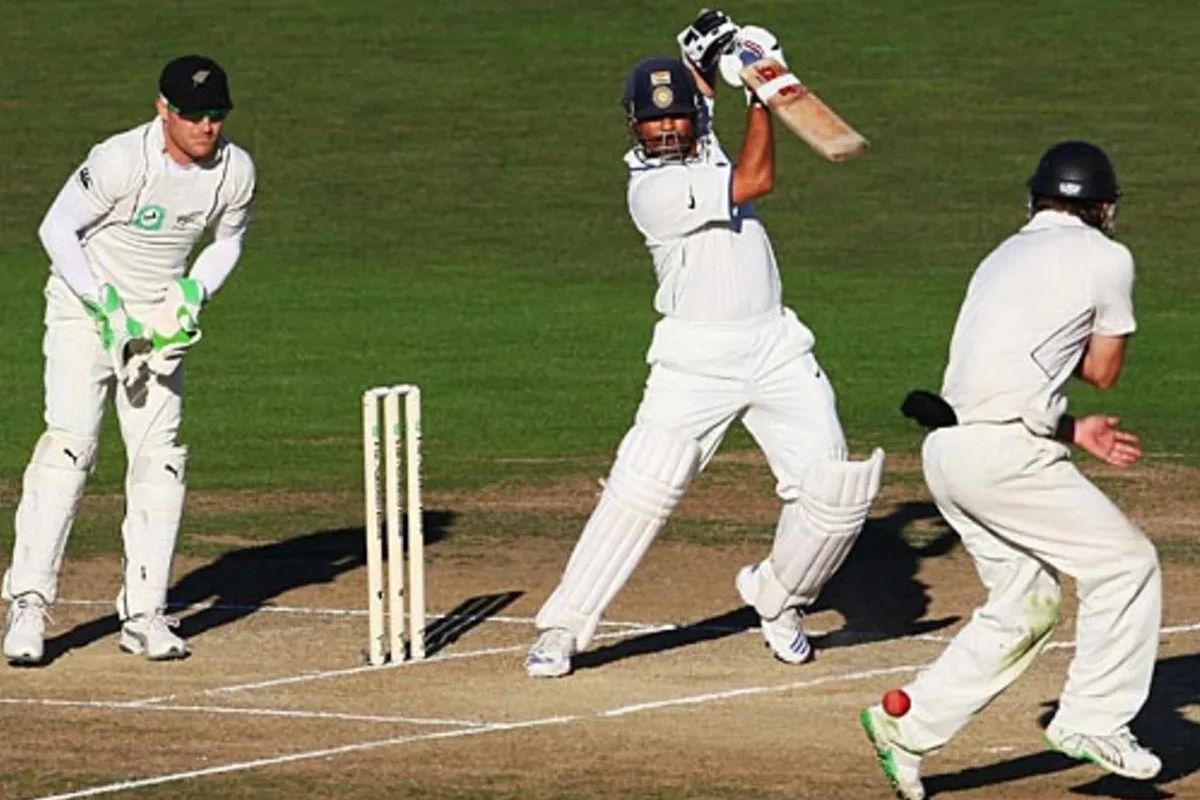
The back foot punch and drive are the same shot. This is to avoid confusion. It’s a key stroke in cricket, especially on bouncy pitches in South Africa and Australia.
To play the back foot drive, a batsman fully extends their elbow. They build on the back foot defense. First, they position deep and slightly off the off stump in the crease. Then, they shift their weight to the back foot. This strategy is crucial for power.
The batsman’s weight must smoothly shift from the front to the back leg. This step offers stability and power. It helps the ball travel through the off-side field.
The shot demands a mix of technique, timing, and footwork. Mastering it is critical for a batsman. A well-played back foot drive can earn many runs and pressure the opposition. It’s a valuable skill.
9) Cut Shot

The cut shot is a top cricket hit, used to tackle short-pitched balls. It aims at the fifth or sixth stump, rising to waist height. A perfect cut sends the ball to the point fielder with a flat swing.
The key to this shot is matching the bat with the ball before the eyes, and fully extending the elbow on impact. This combo ensures maximum power and control, letting the batsman aim accurately.
Batsmen aiming for quick runs love the cut shot. It’s great against fast bowlers over 145 kilometers per hour. This aggressive shot helps score off short balls and pressures the bowling side.
Many cricket legends have mastered the cut shot. Players like David Warner, Kumar Sangakkara, Gautam Gambhir, and Virender Sehwag turned defensive balls into boundary chances with their skills.
The cut shot is crucial for an attacking batsman, allowing quick runs and dominance over the bowling side.
10) Pull Shot
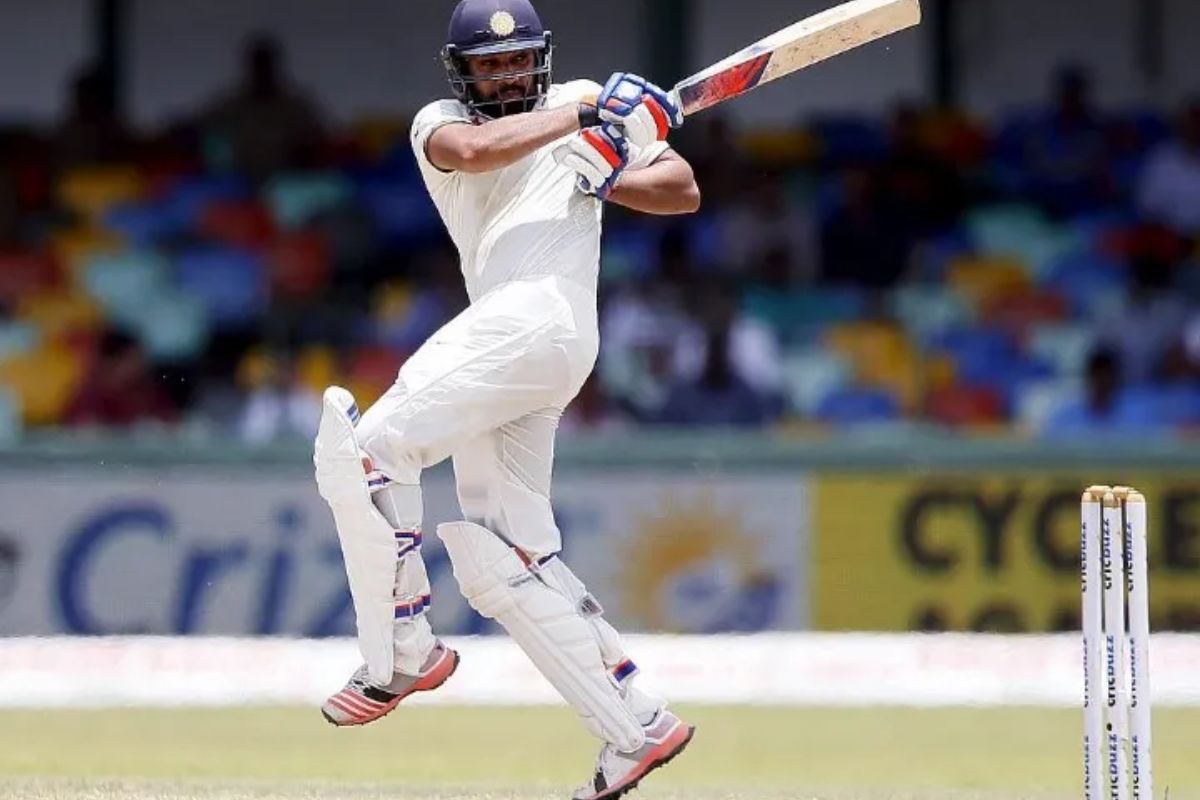
Rohit Sharma’s favorite cricket shot, the pull shot, combines power and timing. It’s loved by fans and is a key weapon in his batting. This aggressive shot often leads to long sixes. It showcases his power and timing.
Executing the pull shot needs precise positioning and technique. The ideal ball lands between the middle and leg stumps with a short pitch. As the ball comes, the batsman aims to raise their bat high and hit it horizontally.
Keeping the elbow straight is crucial. This ensures maximum power transfer, making it easier to clear the boundary.
Sharma, known for his timing and ease in clearing boundaries, has perfected the pull shot. His skill in dispatching short balls with grace has made him a top batsman.
In essence, the pull shot is about aggression and power. It allows batsmen to dominate and score quickly. When done right, as shown by Sharma and others, it’s a formidable weapon.
Unconventional and Innovative Shots
1. Sweep

The sweep shot is a daring move. It’s played when the ball is delivered towards or outside the leg stump. The batsman drops to one knee and uses a horizontal bat to hit the ball towards the leg side.
To succeed, the batsman must crouch and bend the front knee. The back leg stays straight. Then, with a horizontal bat, they hit the ball along the ground. Timing is crucial for a clean hit.
Sir Frank Worrell was a master of the sweep shot. He had perfect technique and timing. This shot made him great against spin bowlers.
The sweep shot needs courage, skill, and timing. It’s ideal for spin bowling on tricky pitches. It not only disrupts the bowler’s rhythm but also opens up scoring chances on the leg side. It adds life to a batsman’s game.
2. Reverse Sweep

Description: The reverse sweep is a unique shot. The batsman switches their grip and uses the back of the bat to hit towards the off side.
Technique: First, the batsman adjusts their grip. They then quickly anticipate the ball, ensuring balance. With a sweeping motion, they hit the ball, guiding it precisely.
Player: Kevin Pietersen is known for his reverse sweep. He showed bravery and skill, making him a tough opponent for bowlers.
The reverse sweep needs skill and courage. It involves taking risks to outsmart the opponent. When done well, it surprises the bowler and opens new scoring opportunities.
3. Switch Hit

The Switch Hit is a unique cricket stroke. It involves the batsman quickly changing their stance from right-handed to left-handed, or vice versa, just before the bowler bowls.
To pull off the Switch Hit, the batsman needs great hand-eye coordination and timing. As the bowler prepares to bowl, the batsman rapidly changes their grip and stance. This move confuses the bowler, making it hard for them to adjust, often catching them off guard.
AB de Villiers is a standout in using the Switch Hit. He’s known for his exceptional skill and courage in doing it. De Villiers’ ability to switch between hands easily made him a tough opponent. He could alter field positions and score runs with great creativity.
The Switch Hit is not just about technical skill. It also shows a batsman’s creativity and adaptability. When done right, it confuses the bowler and opens up new scoring chances, making cricket more exciting.
4. Slog
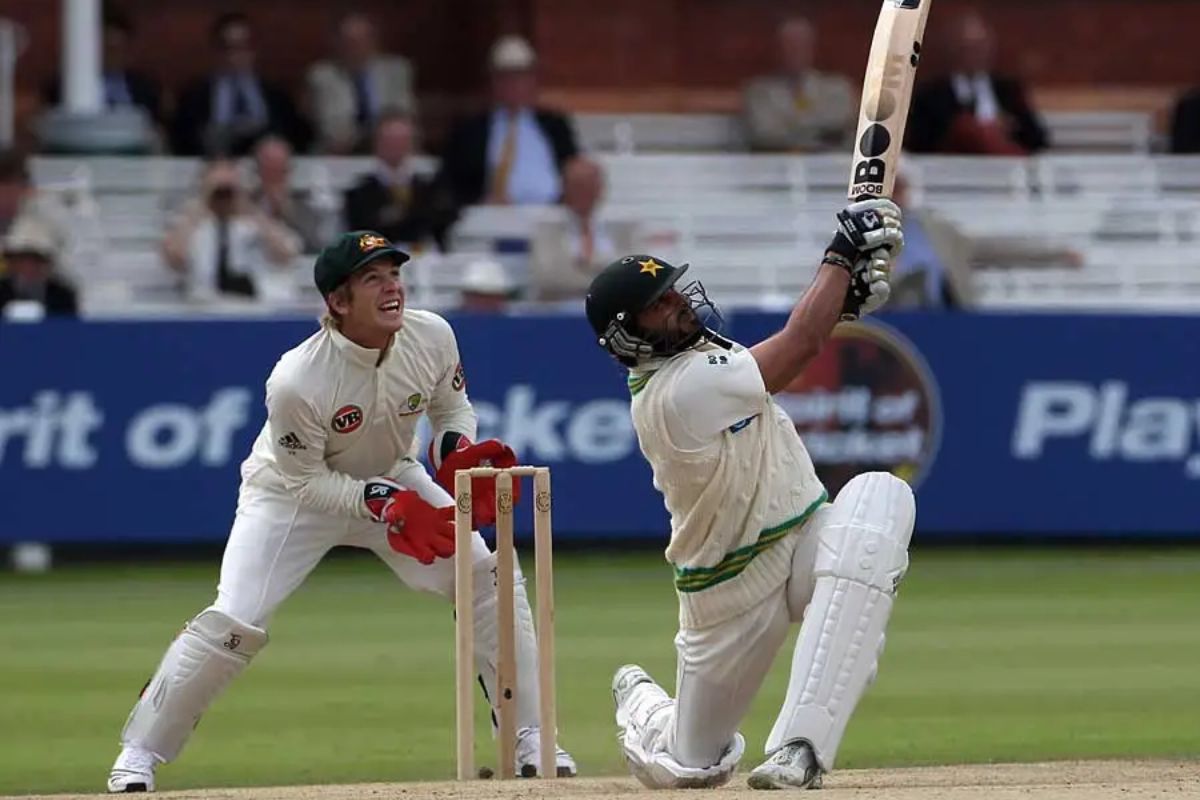
The Slog Shot is a powerful cricket stroke. It aims to hit the ball far. It’s often used in limited-overs matches to score quickly.
Technique: The batsman swings the bat across. They get power from their hips and shoulders. The goal is to hit the ball hard. This sends it over the field to the boundary or into the stands. Timing is key. The aim is to hit the ball perfectly on the bat’s sweet spot for maximum power and distance.
Adam Gilchrist is famous for the Slog Shot. He showed great power and aggression in his batting. Easily hitting balls into the stands made him a tough bowler for opponents in limited-overs cricket. He raised the bar for batting in the modern game.
The Slog Shot reflects the aggressive side of modern cricket. It’s a key move for batsmen. They use it to boost their team’s chances. It’s risky, focusing on power over precision. Still, it’s a thrilling sight for fans. And in limited-overs cricket, it can change the game.
5. Helicopter Shot

The Helicopter Shot is a move linked to former Indian captain MS Dhoni. It stands out for its unique follow-through, mimicking a helicopter, and its strong use of wrists to hit the ball to the leg side.
Its execution is straightforward. The batsman must rotate their wrists forcefully. This generates the required power. As the ball comes in, they rely on a strong bottom hand to hit it. The ball is then sent to the leg side with a sharp motion. The key is in the follow-through, which resembles a helicopter’s blades.
Dhoni is known for this shot. He’s hailed for his skill and innovation in using it during his career. The Helicopter Shot allowed him to send balls out of the park, making him a star in limited-overs cricket.
This shot reflects Dhoni’s creativity and skill as a batsman. It demands precise timing and wrist strength. For fans, it’s always thrilling. It also solidifies Dhoni’s place in cricket history.
6. Paddle Sweep

The Paddle Sweep is a precise shot in cricket. Batters use it to guide the ball fine behind square on the leg side. They kneel and sweep to place the ball behind the wicketkeeper or to the fine leg fielder.
To do this shot well, a batter must first lower their stance and balance. They then use their wrists to control the bat’s direction towards the leg side. The aim is to place the ball accurately for runs.
Tillakaratne Dilshan is a master of the Paddle Sweep. He used this shot effectively in his career to dominate limited-overs cricket, often confusing fielders with his precise placement.
The Paddle Sweep showcases the creativity in cricket. It provides a subtle way to score on the leg side. Though it demands precision, it can unsettle bowlers and swing the match in the batting side’s favor.
7. Edged Shot
In cricket, an edged shot occurs when the ball hits the bat’s edge, not its middle. It can earn runs if it evades fielders or cause dismissal if caught by the wicketkeeper or slip fielders.
Batsmen can reduce edged shots by focusing on solid defense. They should keep the bat close, watch the ball closely, and move their feet correctly. Good balance and timing are key to avoiding edges.
Steve Waugh effectively dealt with edged shots. Although no player intends to edge the ball, Waugh’s technique and calm attitude made risky situations safe or even beneficial.
Edged shots are common in cricket, showing the game’s unpredictability. Skilled batsmen, through their defensive skills and pressure management, can minimize these shots.
8. Dil-scoop

The Dil-Scoop, named after Tillakaratne Dilshan, is a unique shot. The batsman kneels and lifts the ball over the wicketkeeper. It’s ideal for short-pitched deliveries.
To nail the Dil-Scoop, timing is key. The batsman must quickly position, stay balanced, and have good timing and confidence. The bat points up, and a wrist flick guides the ball over the wicketkeeper.
Dilshan mastered this shot. It added flair to his play and made him a challenge for opponents, especially in short games.
The Dil-Scoop shows cricket’s innovation and boldness. It’s tough to do but can be a fun and effective run-scoring tactic, especially against fast bowlers.
9. Marillier Shot

The Marillier Shot, named after Douglas Marillier, is a unique cricket move. It involves the batsman flicking the ball over the wicketkeeper’s head. This is done by quickly moving across the stumps. The shot is best for full-length deliveries.
To perform the Marillier Shot, the batsman needs to move fast across the stumps. This action creates the right angle to flick the ball. Timing is crucial. The batsman must use the ball’s speed and ensure the flick is timed accurately. Balance and control are key. The bat’s angle and wrist movement should guide the ball.
Douglas Marillier is known for this shot. His skill in introducing and using this stroke made him a memorable player.
The Marillier Shot reflects modern cricketers’ creativity. It demands high skill and confidence. When done right, it scores runs and presses bowlers, especially in limited-overs cricket.
10. Lap Shot

The lap shot is a precise stroke, often used against spin bowling. It skillfully guides the ball to the leg side. Batsmen use wrist movements to outsmart fielders.
To play it well, the batsman slightly adjusts their stance. They must have good hand-eye coordination, balance, and read the bowler’s delivery. The bat’s angle is crucial. It guides the ball to the leg side, exploiting gaps in the field.
Brendon McCullum is known for his lap shot. His creativity and quick reflexes made him a standout in limited-overs cricket.
This shot’s elegance and strategy shine in cricket. It requires skill but is effective in finding open field spots, aiding the batsman’s score and keeping the opposition alert.
FAQ
What is considered the most elegant cricket shot?
The cover drive is a standout cricket shot, known for its elegance. It’s beautiful when the bat meets the ball with perfect timing and placement.
What is Shubman Gill’s preferred cricket shot?
Shubman Gill is skilled in many cricket shots. But, he loves the back foot punch most. This shot shows his controlled power and precision. It also highlights how well he can dominate the bowling.
Which cricket shot is deemed the riskiest?
In cricket, some shots are risky. Examples are the switch hit, paddle scoop, dil scoop, and reverse sweep. Among them, the dil scoop is the most dangerous. It’s very hard to do and often leads to being out.
What is a flick shot in cricket?
In cricket, a flick shot is played on the leg side. The batsman uses their wrists to direct the ball. It’s common against deliveries on the leg or middle stump.
Who is helicopter shot King?
The “Helicopter shot” is linked to Indian cricketer Mahendra Singh Dhoni. He’s known as the “shot king” for its creative use. This shot involves a strong wrist flick that sends the ball over mid-wicket. Dhoni made it famous and often used it in limited-overs cricket.
Conclusion
In cricket, players are always developing new shots. They go beyond traditional moves, amassing a wide array of strokes. These shots range from the elegant cover drive to bold ones like the switch hit and helicopter shot. The game’s variety in techniques captivates audiences.
Each shot in cricket is unique and strategic. For example, the late cut’s finesse or the power of a slog. Every shot adds to the game’s excitement.
Players keep innovating. The paddle sweep and Dil-scoop are examples. They offer creative ways to tackle bowlers.
Matches showcase a mix of defense and offense. This makes each game a thrilling mix of skill and entertainment. Fans can look forward to more amazing shots. Players will surely keep pushing the limits.
